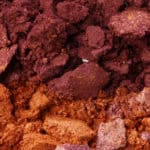Natural Iron Oxide: A Sustainable Solution for Wastewater Treatment
Wastewater treatment is a vital process that ensures the protection of human health and the environment against the harmful effects of pollutants. However, conventional wastewater treatment methods, such as chemical precipitation, oxidation, or membrane filtration, often present disadvantages like high cost, limited efficacy, or environmental impact.
Therefore, natural iron oxide offers a sustainable and innovative solution for wastewater treatment. It is a micronized inorganic pigment with excellent adsorption properties, meaning it can attract and retain heavy metal ions, organic chemicals, and other contaminants present in wastewater.
How Does Natural Iron Oxide Work in Wastewater Treatment?
It is used in various phases of wastewater treatment, depending on the type and concentration of contaminants. For example, it can be used as a coagulant to form flocs that sediment and separate solid particles from the liquid phase. It can also be used as a catalyst to enhance the oxidation of organic compounds using oxygen or hydrogen peroxide. Additionally, it can be used as a filtering medium to eliminate residual contaminants through physical or chemical interactions.
It has a high specific surface area and a porous structure that provides many active sites for adsorption and catalysis. It also has a variable charge that depends on the pH and the type of ions in the solution. This allows it to interact with different types of contaminants, such as metals, anions, or organic molecules.
What Are the Advantages of Using Natural Iron Oxide for Wastewater Treatment?
The advantages of using it for wastewater treatment are numerous. Firstly, it is a natural and environmentally friendly product that does not generate toxic by-products or sludge. Secondly, it is a cost-effective and efficient solution that can achieve high contaminant removal rates, even at low doses. Thirdly, it is a versatile and adaptable product that can be used for different types of wastewater, like industrial, municipal, or agricultural.
Some of the advantages of natural iron oxide over other wastewater treatment methods are:
– It does not require high temperatures or pressures, reducing energy consumption and operational costs.
– It does not alter the pH or conductivity of the treated water, preserving water quality and avoiding the need for further adjustments.
– It does not produce secondary pollutants, such as chlorinated compounds or nitrates, which can be harmful to the environment or human health.
– It can be easily regenerated and reused, minimizing waste generation and disposal costs
Applications of Natural Iron Oxide in Wastewater Treatment
Natural iron oxide can be used in different phases of wastewater treatment, depending on the type and concentration of contaminants. The main applications of natural iron oxide in wastewater treatment are:
– Coagulation and Flocculation: It is used as a coagulant to form flocs that sediment and separate solid particles from the liquid phase. This is useful for removing suspended solids, organic matter, and heavy metals.
– Oxidation: It is used as a catalyst to enhance the oxidation of persistent organic compounds using oxygen or hydrogen peroxide. This is useful for eliminating recalcitrant organic compounds like hydrocarbons, pesticides, and pharmaceuticals.
– Filtration: It is used as a filtering medium to eliminate residual contaminants through physical or chemical interactions. This is useful for removing heavy metals, organic compounds, and microorganisms.
Frequently Asked Questions about Natural Iron Oxide and Wastewater Treatment
What is the difference between natural and synthetic iron oxide?
Natural iron oxide is a mineral extracted from the earth, which Promindsa processes to obtain a high-quality product that meets customer specifications. Synthetic iron oxide is a chemical compound artificially produced through various methods, such as precipitation, thermal decomposition, or hydrothermal synthesis.
The main difference between natural and synthetic iron oxide is the purity and composition of the product. Natural iron oxide contains traces of other elements, such as manganese, titanium, or aluminum, which can enhance its performance in wastewater treatment. Synthetic iron oxide is usually purer and more homogeneous, but it can also contain impurities or additives that may affect its properties.
How can I choose the best natural iron oxide for my wastewater treatment application?
The selection of the best natural iron oxide depends on several factors, such as the type and concentration of contaminants, the pH and temperature of the wastewater, the desired removal efficiency, and the available equipment and facilities.
How can I use natural iron oxide in my wastewater treatment system?
Using natural iron oxide in wastewater treatment systems is straightforward and direct. Just add the appropriate amount of natural iron oxide to the wastewater and mix well. Natural iron oxide reacts with the contaminants and forms insoluble complexes that can be easily separated by sedimentation, filtration, or centrifugation. Then, the treated water can be discharged or reused, and the natural iron oxide can be regenerated and reused.
The optimal dosing and contact time depend on the characteristics of the wastewater and the desired removal efficiency. You can adjust these parameters according to your needs and preferences. It can also be used in combination with other wastewater treatment methods, like biological treatment, to achieve a higher level of purification.








